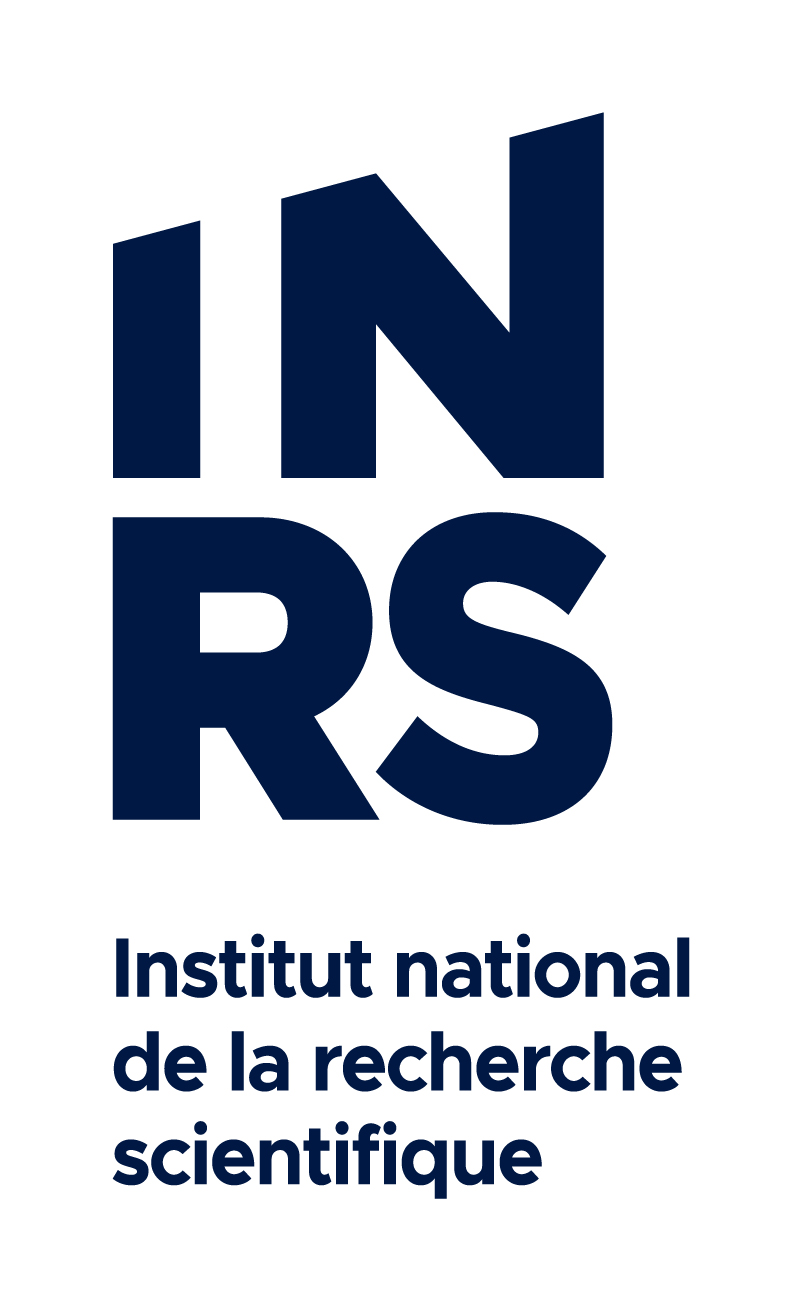A journey into the infinitely small: how a handful of atoms are responsible for coronavirus infection
Nicolas Doucet
April 8th, 2020
(This story was
originally published in French on April 2nd, 2020)
I’ve always found it funny when people talk to me about food when I tell them I work in protein engineering. Considering that proteins are one of the most important molecules of life, this always struck me as a curious shortcut. As a matter of fact, proteins are the building blocks of all living things, from bacteria to human cells, plants, or yeast. Not only are they involved in the molecular architecture of all living organisms (and viruses), they are also responsible for carrying out virtually all chemical reactions of life. In short, proteins are not just an important source of nutrients!
In fact, did you know that what is literally and figuratively destroying our lives these days is primarily caused by... a protein? Indeed, the culprit is the “spike” protein (or S protein) of the coronavirus. Let me try to explain how biochemistry and structural biology can demonstrate this. Just follow me: this will be an easy ride.
As I am sure you have noticed by now, media outlets keep showing us schematic diagrams of the coronavirus. Over the past few weeks, how many times have you seen this big sphere covered with small dots on its surface (see the red spots in the picture below)?
These little red dots (which are not really red in real life) represent the infamous S protein. This protein is the entry point of the virus into the cells of our body: the only way this inanimate little beast has found to infect us. In other words, the S protein is a bit like a key that recognizes a lock located on the surface of our cells. (This lock is another protein named ACE2, but I'll spare you the details.)
Without the exact and specific combination between the virus key and the human lock on our cells, the coronavirus cannot infect us. Niet, non, nein, it doesn't work! Considering that our daily environment is quite literally populated by billions of viruses everywhere, it is rather surprising that viral infections like the one afflicting us these days do not occur more often. In fact, my colleague Sylvain Moineau from Laval University uses a great analogy to illustrate this: if you go near a lake and scoop water between your hands, you are holding at this very moment more viruses than there are humans on the planet! Impressive, isn't it?
That being said, the vast majority of all viruses on Earth are completely harmless to humans because they mainly attack bacteria. Other viruses, on the other hand, can attack animals and humans, provided they present the *right* key to the *right* lock. Without that exact combination, you carry out your life as if nothing happened. Finding the proper lock and key combination is quite a rare event since it relies on the extremely precise organization of a handful of atoms in the right place at the right time.
To allow the coronavirus to infect humans, the S protein must therefore recognize and communicate at the atomic level with the human lock in an extremely precise fashion. Over the past 50-75 years, several important scientific discoveries have allowed us to "see" these interactions at the molecular level. Thanks to new technologies developed because of investments in fundamental research, we have developed tools to visualize a molecular object at the atomic scale, whether it is a protein, a cell, or a virus.
This is a complex task to achieve and I will spare you the details, but it is precisely what we call structural biology: the art of visualizing the 3D organization of the molecules of life as they carry out all the chemical reactions that keep us alive, in the infinitely small. Because this is exactly what we are: billions of organized and coordinated chemical reactions in real time that occur in each of our cells at every second of our life (and even after death).
So this is all well and good, but what's the point of “seeing” these molecules in 3D? Let’s go back to the coronavirus. Even though this virus only appeared in China back in November 2019, two research groups have already managed to take a “picture” of the 3D structure of the S protein on the surface of the virus, in addition to the “picture” of the S protein when it recognizes its lock on the surface of our cells. Using modern technological advancements that did not exist until recently, these researchers achieved this impressive feat in a record time of just 2-3 months and published their results in the prestigious journal Science (see references below).
By way of comparison and to give you an idea of the dazzling technical advancements achieved in recent years, equivalent molecular details have taken more than 20 years to be obtained with such precision on HIV! Achieving this in less than 2-3 months remains a colossal feat, which is only made possible by recent technological advancements and financial investments in basic science.
Knowing this, I took some time to build a few atomic pictures of the S protein to show you. These images were prepared from the atomic data obtained by these researchers, whose results are publicly available because they were funded by governments and our taxes (like the vast majority of basic research in our societies). When looking at the S protein at the molecular level, we can “take a picture” of all its atoms as they are positioned in space. When schematized, it looks like this:

It kind of looks like a big ribbon-like smear that was drawn by my two daughters, right? But I assure you: this is superbly organized at the molecular level and held together by tens of thousands of atomic interactions that recognize each other in a very specific way. And it moves! The infinitely small is an absolutely fascinating universe which obeys very specific rules. With the right techniques and the right "cameras", you can pretty much take pictures and see what's going on at the molecular level in proteins, even though all of this is completely invisible to the naked eye (and even regular microscopes).
On this previous picture, have a look at the green colored section on top of which you see mini red dots. This section of the S protein is called the "Receptor Binding Domain" (or RBD, for short). As its name implies, it is the only section of the large coronavirus S protein that contacts the lock on the surface of our cells. And the little red dots at the end of the RBD are the only atoms that are absolutely necessary to make contact.
It's a bit like your hand grabbing the door handle of your car: your entire body is essential for you to move to your car, but only your hand grabs and pulls the handle to open the door. The virus pretty much works the same way with the S protein (its body), while the RBD pulls the handle. This is what it looks like when you look even closer:
This time, the RBD is still colored green, but you can also see part of the human lock: the ACE2 protein (in yellow). The right section of this picture is a zoomed view of the left square, with little red and blue spheres that represent all the important atoms required by the two proteins to recognize each other, further allowing the virus to enter our cells.
And that's it! Because a few dozen atoms manage to "talk" to each other, the virus manages to enter our cells to infect us. Perturb or change a few of these atomic interactions and the S protein won’t recognize its lock anymore. This is a big part of the reason why the current coronavirus (SARS-CoV-2) is more infectious than the SARS virus that hit the planet back in 2003, even though both viruses are very close relatives. The rest of the infectious processes that lead to the development of COVID-19 symptoms are far from pretty, but they also involve hundreds of other proteins that interact in similar fashion at the atomic level.
At this point, I guess you can see me coming, right? What is the point of structural biology? Well, what would happen if I cut your hand off and then asked you to grab the handle of your car (assuming you're not screaming in pain or calling the police to report me...)? OK, ok, I'm not that sadistic! Instead, let's assume I put a huge ski glove on your hand. You know the kind that's so big it prevents you from actually grasping anything delicate?
Funny guys will offer to open the door with the other hand, but say I forced you to wear a huge pair of gloves? You won't be able to grab the handle to get in your car. Same thing with the coronavirus: if you can prevent those few red atoms from recognizing the blue atoms by putting a "pair of gloves" in between, you pretty much prevent the virus from recognizing your cells. Coronavirus infection cannot occur.
This is one of the main advantages of structural biology: it allows us to see and understand what is actually going on at the atomic level in order to develop specific drugs or molecules to disrupt this unique interface between two proteins. The goal is to present the red atoms with something they’ll actually “prefer” over the blue atoms, and then stick to it. We are not talking about developing a vaccine here (which involves a completely different molecular mechanism), but this approach is one of the many avenues currently being pursued for the development of potential antiviral drugs that may prevent or reduce the effect of coronavirus infection.
I hope I managed to convince you that proteins are not just essential to gain muscle weight!
REFERENCES

Principal Investigator
Nicolas Doucet obtained his B.S. in
biochemistry from Laval
University (B.S. Biochemistry, 2000) and successively
completed a master's degree (M.S. Biochemistry, 2004) and a
doctoral thesis in enzyme engineering with Joelle
N. Pelletier at the University
of Montreal (Ph.D. Biochemistry, 2007).
After completing a protein NMR postdoctoral fellowship in
the Department
of Chemistry at Yale
University (with J.
Patrick Loria, 2007-2010), he joined the faculty at INRS
in 2010, where is now Full Professor.

531 boulevard des Prairies
Laval, Québec, H7V 1B7 CANADA
Phone: (450) 687-5010, ext. 4212
Fax: (450) 686-5501
Email: nicolas.doucet@inrs.ca

